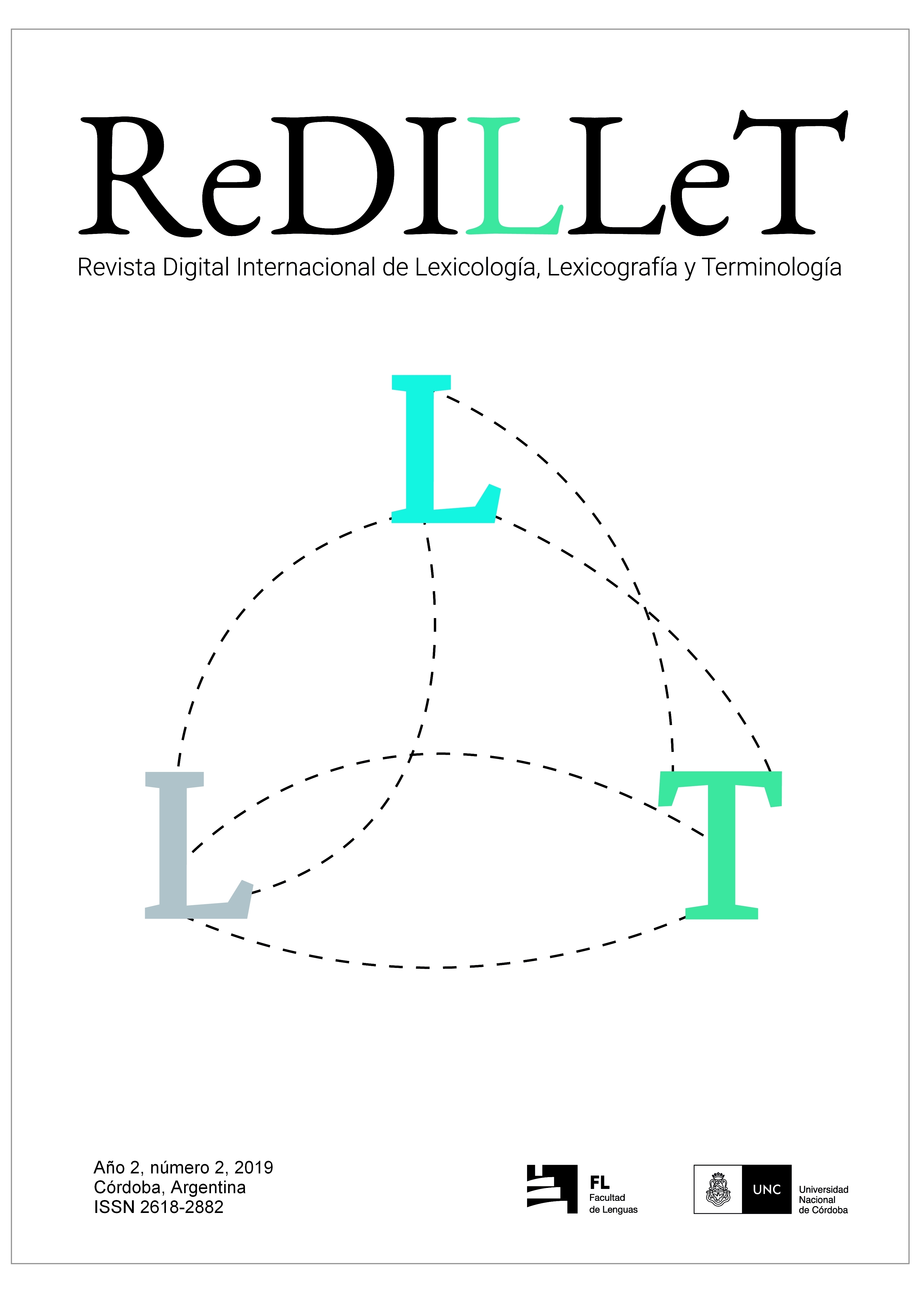Desde la interfaz léxico, sintaxis, significado: los derivados por sufijo -ear
Abstract
Resumen
La productividad del sufijo -ear es una fuente importante de formación de una significativa cantidad de verbos en las lenguas romances. En el caso del español, en particular del español rioplatense, cualquiera sea el registro que se considere, se advierte la constante aparición de nuevas formas como las listadas en (1). Estos verbos proponen un interesante caso de estudio y permiten avanzar en el conocimiento de distintas cuestiones involucradas en la estructuración verbal, los formativos disponibles en la lengua y los efectos de distintas variables involucradas, por ejemplo parrillear, terracear, icardear, mambear, whatsappear (1). Nuestro análisis parte de las siguientes preguntas: ¿cuál es la lectura/interpretación de cada serie? Los derivados obtenidos, ¿suponen condiciones formales (semánticas y sintácticas) idénticas o marcan, más bien, alternativas relevantes dentro de un conjunto morfológico aparentemente homogéneo? Por último ¿cuál es la naturaleza de la raíz léxica y qué aporte de significado determina en cada caso? Para responder a estas preguntas analizaremos aspectos sintácticos y semánticos de los verbos derivados. Esto incluye el análisis de las raíces léxicas, su rol en la configuración verbal y la formación del significado obtenido como resultado de un proceso computacional, bajo la hipótesis de que (i) los verbos de (1) presentan variaciones importantes de significado; (ii) tales variaciones y el aporte semántico de las raíces responden de manera transparente y predecible a la configuración verbal que lo aloja. Particularmente, buscaremos explicar las divergencias semánticas en correlato con la configuración léxico-sintáctica de cada verbo, de modo de plantear un correlato predecible entre semántica y sintaxis-léxico, a través del estudio de las combinaciones y posibles variaciones de significado de las series, en el ámbito de la interfaz léxico-sintaxis–significado, tomando como base empírica tanto patrones analíticos de muestras como patrones determinados por consultas a conjuntos significativos de nativos a través de pruebas especialmente diseñadas.
Palabras clave: morfología • sintaxis • léxico • productividad
Abstract
The productivity of the suffix -ear is an important source of formation of a significant number of verbs in Romance languages. In the case of Spanish, particularly in rioplatense Spanish, whichever register is considered, the constant appearance of new forms such as those listed in (1) is noticed. These verbs propose an interesting case study and allow to advance in the knowledge of different questions involved in the verbal structuring, the formative available in the language, and the effects of different variables involved: parrillear, terracear, icardear, mambear, whatsappear (1). Our analysis is based on the following questions: what is the reading / interpretation of each series? Do the derivatives obtained assume identical formal conditions (semantic and syntactic), or do they mark relevant alternatives within an apparently homogeneous morphological set? Finally, what is the nature of the lexical root and what contribution of meaning does it determine in each case? To answer these questions we will analyze syntactic and semantic aspects of the derived verbs. This includes the analysis of the lexical roots, their role in the verbal configuration, and the formation of the meaning obtained as a result of a computational process, under the hypothesis that (i) the verbs of (1) present important variations of meaning; (ii) such variations and the semantic contribution of the roots respond in a transparent and predictable way to the verbal configuration that hosts them. In particular, we will seek to explain the semantic divergences in correlate with the lexical-syntactic configuration of each verb, in order to pose a predictable correlate between semantics and syntax-lexicon, through the study of the combinations and possible variations of meaning of the series, in the scope of the lexical-syntax-signified interface, taking as empirical base both analytical patterns of samples, as well as patterns determined by consultations to significant sets of natives through specially designed tests.
Keywords: morphology • syntax • lexicon • productivity
Downloads
Published
Issue
Section
License
Aquellos autores que deseen publicar en ReDILLeT aceptan los siguientes términos:
• Los autores conservarán sus derechos sobre el texto entregado y garantizarán a la revista el derecho de primera publicación de su obra. Dicho derecho estará simultáneamente sujeto a la licencia Creative Commons, la cual permite que terceros compartan la obra siempre que
se mencione al autor y al lugar de la primera publicación.
• Los autores realizan una cesión de derechos no exclusivos, lo que implica que la publicación de los artículos en ReDILLeT no impide al autor publicar su texto, a posteriori, en otras revistas u órganos editoriales; asimismo, los autores autorizan que el trabajo sea depositado en repositorios institucionales, como el Portal de Revistas de la Universidad
Nacional de Córdoba o el Repositorio Digital de la Universidad Nacional de Córdoba.



